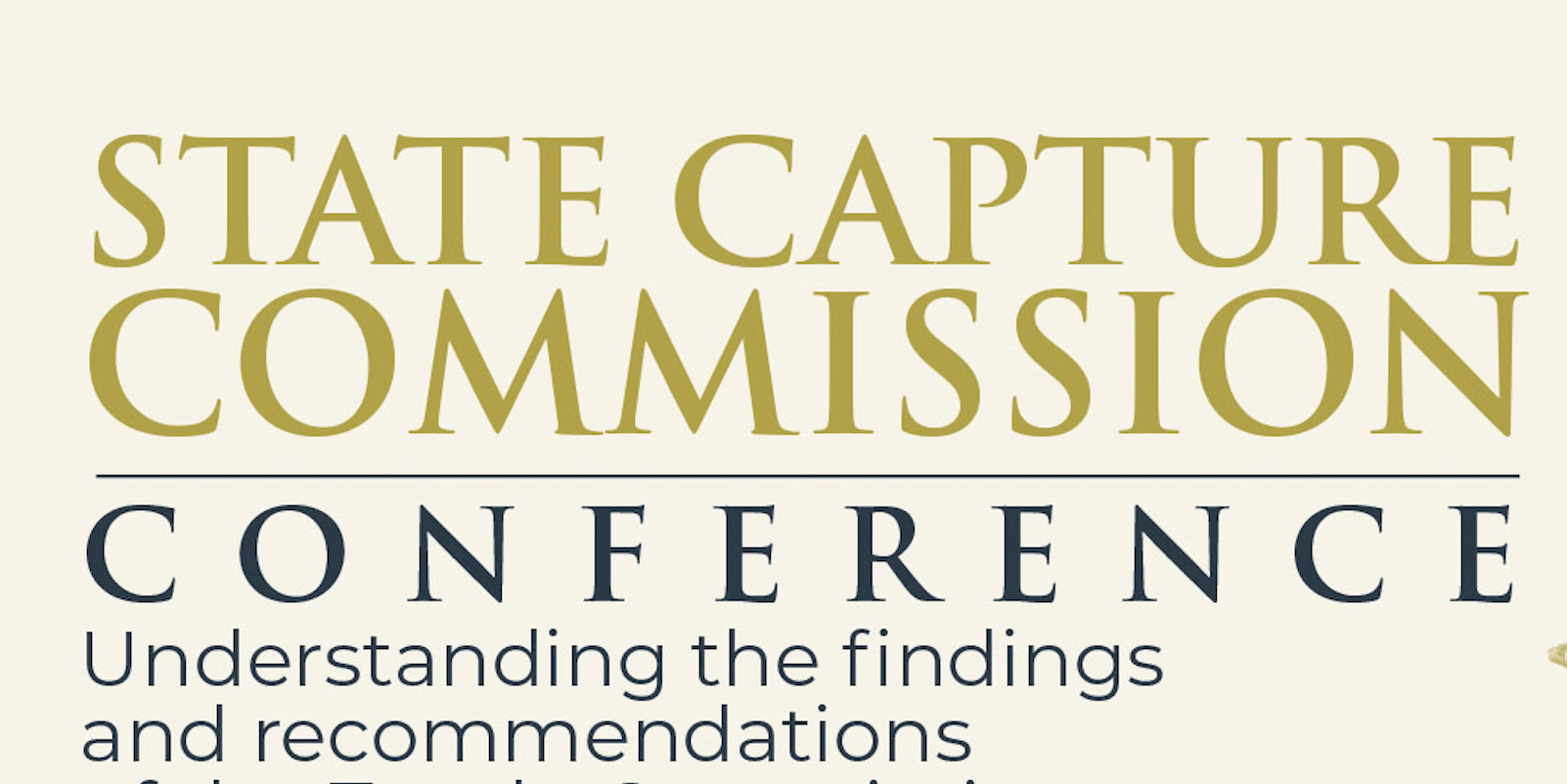By Devi Pillay
[first published in the Daily Maverick]
The Zondo Commission missed an important opportunity to fully contextualise the evidence concerning law enforcement and to analyse its role in State Capture. More work needs to be done to show concretely how State Capture affected these institutions and what can be done to fix them.
State Capture is, according to the Zondo Commission’s final definition, a project organised by a network of collaborators both inside and outside the state which conspires systematically (criminally and in defiance of the Constitution) to redirect resources from the state for their own gain, as well as to secure control over levers of power within the state.
Among a number of other features, the commission found that State Capture involves “a deliberate effort to subvert and weaken law enforcement and intelligence agencies at the commanding levels so as to shield and sustain illicit activities, avoid accountability and to disempower opponents”. Not much attention, however, has been given to the law enforcement system in the final report.
At least 18 witnesses testified about matters directly concerning law enforcement agencies, over a cumulative 40 days of hearings. Many other witnesses mentioned law enforcement issues as part of their testimonies on other matters.
The commission did make substantial findings and recommendations concerning the State Security Agency (SSA), the South African Revenue Services (Sars) and the Crime Intelligence division of the South African Police Services (SAPS). Findings and recommendations on other law enforcement institutions that were in the spotlight during the hearings — the National Prosecuting Authority (NPA), the SAPS, the Hawks, and the Independent Police Investigative Directorate (Ipid) — are, however, noticeably missing.
At the handover ceremony for the final part of the report, the Chairperson, Chief Justice Raymond Zondo, said that corruption in law enforcement agencies was not dealt with, even though the commission had started that line of investigation. It was taking much more time than initially anticipated, and the issues were not straightforward.
“For example, when we are talking about a decision to prosecute or not prosecute, it is not always very easy to get evidence to show that, because you’ve got to leave room for the fact that the prosecutor can make that decision in good faith, but be wrong,” Judge Zondo said.
Law enforcement was not explicitly included in the commission’s terms of reference. But as the commission’s own work highlights, the failure of law enforcement institutions to detect and act upon widespread corruption is a key part of the State Capture story. In his opening address to the Commission, the head of the legal team Advocate Paul Pretorius SC remarked that the failure of law enforcement institutions to hold wrongdoers accountable was both a cause and symptom of State Capture:
“Very importantly, have wrongdoers been held to account both within and outside of government? To the extent that the commission may find that they have not been held to account, further questions can be asked. Is this inefficiency, the result of some other cause, or is it also a manifestation of State Capture? The question arises, will it be necessary to call our government and law enforcement agencies to account?”
Ultimately, the commission did not manage to answer that question.
The commission missed an important opportunity to fully contextualise the evidence concerning law enforcement and to analyse its role in State Capture.
In defining State Capture, the commission concluded that “the subversion of the democratic process… was not simply about extracting resources but was further geared towards securing future power and consequently shaping and gaining control of the political order…”.
In its thorough investigation of the intelligence services, the commission uncovered how corruption in the SSA — from improper appointments to looting to unlawful operations — was part of a systematic attempt to capture the institution in order to use its intelligence functions to serve personal and political ends on behalf of former president Jacob Zuma and his allies.
The report’s conclusions on the capture of Sars were similarly stark: it found that the private sector colluded with the Executive, including Zuma, to render the institution ineffective: Sars’ investigatory and enforcement capacity presented a hurdle to those involved in organised crime.
Unfortunately, corruption which occurred in other law enforcement institutions was not analysed through this lens.
The volume on Crime Intelligence, for example, delivers findings on the looting of the Crime Intelligence secret service account and the obstruction of the investigations into Richard Mdluli. But it does not ask why Mdluli was protected by so many people across the criminal justice environment — including key prosecutors and senior officials in the SAPS and the Hawks.
It does not show how all of these individuals were linked to each other and to former president Zuma, information which is readily available (for example, in the Mokgoro Report, in various court cases, in the evidence of the former national director of public prosecutions and the “three spooks”, which the commission broadly accepted, and investigative journalism pieces in the public domain.)
It also opted not to make any findings — or indeed present any of the evidence — concerning Ipid or the Thoshan Panday case, which the commission spent a not-insignificant amount of time investigating. The commission also did not make use of Mxolisi Nxasana’s evidence, which raised serious concerns about the independence of the NPA and the role of the former president. The roles of individuals like Nomgcobo Jiba and Berning Ntlemeza, who were implicated by multiple witnesses, were also not interrogated.
More attention could have been paid to the role of the President in the law enforcement environment. The President is entrusted with the power to appoint many of the most senior officials, including the minister of police, the national director of public prosecutions and all provincial and special directors of public prosecutions, the head of the special investigations unit, the commissioner of police, and the commissioner of Sars. He also has the power to remove many of these officials.
This raises critical questions about those appointments and dismissals — especially because the commission has found strategic appointments and dismissals to be a key mechanism of State Capture in other parts of the state.
While it was not a major focus of the commission’s work, an analysis of the systematic weakening of our law enforcement environment should now receive the attention it deserves. The reams of evidence gathered by the commission are a testament to the failure of the criminal justice system.
The commission did ultimately understand the manipulation of law enforcement agencies as a part of State Capture — it says as much in its description of the phenomenon. But more work needs to be done to show concretely how State Capture affected these institutions and what can be done to fix them. The President’s plan which is to accompany his tabling of the Zondo reports to Parliament must include this focus.


